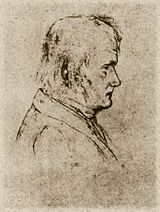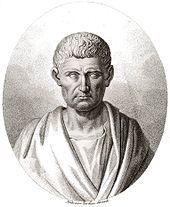

Hermès ou Mercure ? De quel dieu la traduction est-elle le nom ? Et si nous consentons à ne retenir du dieu que le signe qu’il se passe quelque chose[1], alors la traduction sera à envisager à partir de la catégorie de l’événement. L’événement est l’imprévisible qui surgit en dehors de tout tissu causal des faits et qui rend un nouveau monde possible. C’est la création de virtualités au cœur de la réalité. Il y a justement des textes dont la traduction a laissé advenir de nouveaux possibles – ce qui signifie : ouvert un monde, renoué les consciences, libéré le divin. La tâche du traducteur aura donc été celle du théologien : en interprétant la Révélation, celui-ci est appelé à remettre en circulation l’Esprit suite à l’échec de Babel, lorsque Dieu, d’un même geste, s’est rendu inaccessible et a divisé le monde en condamnant les hommes à la multiplicité des langues.

En guise de traduction-événement, on connaît l’interprétation de l’Ancien Testament hébraïque en langue homérique – la langue universelle de la culture – qui aurait été commandée par Ptolémée Philadelphe (285-247 av. J.-C.) vers 270 av. J.-C. à Alexandrie et entreprise par 70 ou 72 savants Juifs – les Septantes –, texte qui est toujours en vigueur dans l’Église grecque orthodoxe et qui sera la base de l’interprétation en vieux slave qu’en donneront à leur tour Cyril et Méthode au 9ième siècle.

Le terme « interprétation » est à prendre dans toute sa polysémie : mise en évidence du sens caché, compréhension, divination, exécution. Philon d’Alexandrie compare les traducteurs à des prophètes inspirés : ils sont chargés d’interpréter en grec l’interprétation par Moïse de la parole de Dieu. Car le prophète lui-même traduit le logos divin dans les Tables de la loi. Entre l’œuvre traduite et l’œuvre traductrice, il n’y a dès lors pas de hiérarchie : elles sont également inspirées et animées par le même logos divin.
C’est d’ailleurs à l’occasion de cette traduction des Septantes que se met en place le lexique grec de la traduction. Il faut en effet se rappeler que les Grecs, monolinguistes, n’étaient pas des traducteurs. Ce qui ne signifie pas qu’ils n’avaient pas assimilé l’étranger – le perse, l’indien, le phénicien – mais cela signifie d’abord que le logos est pour eux grec : hellénizein c’est à la fois parler grec et s’exprimer logiquement. L’utilisation du terme herméneia (du dieu Hermès) qui désigne l’interprétation, l’explication, l’expression, est fixée à cette époque : le mot sert désormais à signifier aussi traduction d’une langue à une autre. On en trouve le premier usage vers 180 av J.-C. chez Aristobule, puis dans le texte fictif de La Lettre d’Aristée à Philocrate.
En revanche, la version de la Vulgate latine (en vigueur jusqu’en 1979 dans l’Église catholique), réalisée en 390-405 par Jérôme de Stridon, constitue une tentative adverse pour revenir aux sources hébraïques en proposant une interprétation plus fidèle de l’unique texte original, avec une traduction du Pentateuque en latin qui soit conforme à sa lettre.

Il s’agit de traduire chaque mot, car c’est le seul moyen de préserver le sens original du texte source. Car l’hébreu, en tant que le lieu même où s’est d’abord révélée la Vérité, constitue en même temps « la matrice de toutes les langues[2] ». Une telle interprétation littérale a valu à Jérôme l’accusation de blasphème, en ce qu’il aurait cherché à judaïser les Écritures. En réalité, il rompt avec ce qui était le modèle grec pour les Romains. Et le rapport de Rome à Athènes a d’abord été un rapport de traduction et les Grecs un modèle à traduire, non sans une exigence d’adaptation au goût et à l’esprit romain.
C’est que, rappelons-le, les Grecs étaient à cette époque devenus un peuple colonisé. Il s’agissait de ramener les butins à Rome, de conduire une opération de transfert sur une large échelle qui passait aussi bien par le pillage des richesses, les emprunts dans l’art et dans l’architecture, que par l’adaptation littéraire des textes et par l’interpretatio romana (selon l’expression de Tacite) du panthéon hellénique.

Cicéron entend ainsi transporter (transferre) Platon et Aristote dans la romanité. C’est pourquoi, selon lui, le traducteur ne doit pas traduire littéralement, verbum pro verbo, mais sensum de sensu. La metaphora (transferre) à laquelle il recourt consiste en un transport du sens. Et traduire, c’est précisément créer des métaphores qui vont contribuer à assimiler ce qui manque à la Patrie romaine. Par la metaphora, on s’approprie l’étranger – le grec – en redonnant vie et éclat nouveau à la latinité. Ainsi, le travail du traducteur participe de l’Imperium et de son idéologie conquérante.
Le débat né autour des premières grandes entreprises de traduction illustre déjà l’alternative exprimée par Schleiermacher : ou bien l’auteur ou bien le lecteur sera ménagé par le traducteur[3]. Soit on laisse en paix l’étranger en attirant le compatriote vers lui, soit on laisse en paix le compatriote en amenant l’étranger à lui. Et l’on sait que les conditions de la pax romana se sont imposées au prix d’un endettement perpétuel du vaincu, tenu de rembourser le prix de sa securitas, de sa paix.
Si comme les Italiens aiment à le rappeler, les traductions constituent forcément des trahisons, on mésinterprète cependant tout autant le sens de l’étranger que celui du propre, dont il faut faire « l’apprentissage » à travers « l’épreuve de l’étranger » selon les mots de Hölderlin[4].

Pour le poète, l’« épreuve de l’étranger » est la condition de l’« apprentissage du propre ». Parce que la familiarité du propre contribue précisément à l’obscurcir : ce qui est familier nous est rendu par là même complètement étranger. En mettant l’étranger en nous, la traduction nous confronte du même coup à l’étrangeté du propre. Elle le fait à chaque fois selon les modalités par lesquelles la cité accueille et s’approprie l’étranger, en ami ou en ennemi, en vainqueur ou en vaincu, en dominant ou en dominé.
Il faut dire que le risque de trahir sa propre langue est de loin le plus insidieux et le plus courant. On croit comprendre le sens d’un mot fondamental de notre langue, puisqu’on l’identifie. Mais en réalité ce sens se constitue dans les différences plutôt que dans la stabilité de l’identité à soi. Si dans la langue, il n’y a que des différences, ce sont les différences qui produisent le sens : il ne suffit pas d’identifier un terme pour entendre un sens déjà là. Heidegger distingue ainsi entre « connaissance des termes » et « savoir des mots[5] » : tant que nous nous en tenons à une connaissance des termes, nous ne pensons pas, nous ne pensons rien. Et c’est là, selon Heidegger, le destin de tout l’Occident depuis les Grecs. D’où l’exigence de se mettre à l’écoute de ce qui parle dans la langue. Car nous ne parlons pas, c’est la langue qui parle. « Savoir des mots » signifie l’attention et le « respect[6] » porté à la parole dans ce qu’elle dit d’essentiel à propos de ce qui est, de l’être de ce qui est. Par contraste avec l’offensive technique qui s’empare de son objet pour le maîtriser et l’utiliser. La pensée libre (« méditante ») contre la pensée des sciences et des affaires (« calculante »).

L’élucidation des mots fondamentaux appelle un paradigme herméneutique de la traduction, selon lequel il ne s’agit pas de traduire les mots échangés sur le marché, le Wall Street English, mais bien des paroles qui veulent dire quelque chose – qui enferment un sens que nous devons interpréter pour en faire l’épreuve, en avoir une intuition. Devant de tels mots, la tâche du traducteur de restituer les termes étrangers n’est valable qu’aussi longtemps qu’elle s’accompagne d’un travail d’interprétation sur les deux langues auxquelles il a affaire. L’interprétation d’un texte antique qui a trait à l’on, au théion, à l’alétheia, doit ainsi le convier au travail de penser en même temps ce qu’on appelle dans sa propre langue être, dieu, vérité – de se mettre à l’écoute des mots que l’on gaspille sans compter. S’exposer à une parole étrangère revient alors à s’interpréter soi-même : un souci de soi (épimeleia heuautou) guide le travail de l’interprète.
Si par exemple, nous lisons le texte traduit du poème de Parménide, celui-ci nous parle avec les mots de notre langue. Mais ce qu’il dit n’est pas pour autant perceptible pour nous. En nous contentant de remplacer les mots traducteurs par les mots traduits, nous courons le risque de mésinterpréter la parole grecque : « le domaine à partir duquel la parole de Parménide parle[7] » nous demeure fermé. Le contenu du mot alétheia qui apparaît dans le poème et qui désigne une déesse ne peut pas être entendu si nous lui substituons simplement notre terme de vérité. Le terme grec renvoie à l’épreuve singulière qui en est faite par Parménide et plus largement à un domaine de l’expérience qui nous est complètement hermétique, qui était peut-être déjà trop familier aux Grecs de l’époque, mais qui en tout cas se laisse penser dans les écrits qui nous sont parvenus.

Le poète est conduit devant la déesse Vérité à l’écart du chemin qu’empruntent la plupart des hommes. Il est mis littéralement sous son regard. Le theion en grec veut dire « celui qui regarde » selon l’interprétation de Jean Damascène, reprise par Heidegger[8] qui remarque à juste titre que regarder, pour un Grec, c’est d’abord faire l’expérience du visage des choses, et donc de sa propre visibilité : tout ce que je vois me regarde. Si l’homme grec découvre le theion comme une puissance en retrait au regard de laquelle il est exposé, le Deus latin brille. Le terme Got, God dans les langues germaniques signifie l’appelé, l’invoqué ; Bog en russe, c’est celui qui comble de dons, de richesses ; Yahwé en hébreu, « celui qui est ».
Et si l’on veut maintenant traduire littéralement a-létheia, il faudrait reconstituer le mot par sans-cèlement, hors-retrait, a- étant la particule qui signifie la privation. Léthée vient du verbe lanthanô : se cacher, être en retrait. Il reste néanmoins très difficile de penser ce que les Grecs pensaient sous ce terme. Le risque est évidemment d’y projeter un sens tardif, celui de l’usage qu’on en fait : on attribuerait au mot une signification usée qui lui est complètement étrangère et qui du fait même qu’elle est usée, nous est devenue étrangère, quand bien même donc elle nous serait habituelle – puisqu’on ne pense pas plus ce qu’on appelle vérité dans sa propre langue que ce que les Grecs appelaient alétheia. En tant que sujet de la familiarité quotidienne, mode d’être dans la moyenne pour lequel les significations publiques circulent comme des choses toutes faites, on – das Mann – c’est l’absence de pensée. Cela dit, il faut bien admettre que les Grecs eux-mêmes ne prenaient pas toute la mesure des paroles qu’ils avaient prononcées. C’est bien la raison pour laquelle, il s’agit de comprendre ce que les Grecs n’étaient pas davantage en mesure de comprendre dans leur langue : « Non seulement nous voulons, mais nous devons nécessairement comprendre les Grecs mieux qu’ils ne se comprenaient eux-mêmes[9]. »
Ce qui se joue dans l’interprétation des Grecs pour Heidegger, ce n’est pas du tout l’exigence d’un retour ou d’un nouveau transfert d’un capital symbolique et culturel de la Grèce vers l’Allemagne. La traduction des Grecs par les Romains aura certes contribué à oblitérer le caractère historique des mots fondamentaux ainsi que leur fondement existentiel, en déracinant les paroles du monde hellénique pour les transposer dans un tout autre domaine de l’expérience, celui de la romanité. Elle a surtout inauguré un nouveau rapport de l’homme à la langue, selon lequel les différentes formes de l’expression linguistique seraient parfaitement convertibles les unes dans les autres. Coupés de toute référence à l’expérience vivante où ils trouvent leur origine, les mots sont réduits alors au rôle de véhicules des significations, livrés à une forme de communication universelle. Il faut rappeler par exemple, qu’un terme tel qu’ousia en grec qui deviendra la substantia en latin désignait d’abord la propriété du domaine familial : ce n’était pas un mot technique du jargon philosophique mais un mot de la langue de tous les jours, à la différence du terme latin, une métaphore créée expressément.
À la différence du tra-ducere compris comme l’opération inter-linguistique qui consiste à échanger des mots contre d’autres en faisant passer des significations, identiques et transcendantes, d’une langue étrangère vers la langue maternelle, ou vice versa, l’hermèneuein n’occupe pas une position extérieure par rapport à la langue. Loin de se fonder sur le postulat de la commutabilité et de la communicabilité des mots, c’est-à-dire de leur nature de marchandise (merx), l’herméneutique cherche à « traduire » une langue dans la parole même où elle s’origine, selon un processus intra-linguistique – pour nous en donner la compréhension. C’est ce que Heidegger appelle une « traduction originaire ». Cette traduction se passe déjà dans le rapport à la langue maternelle et elle conditionne aussi la connaissance qu’on a d’une langue étrangère : on ne commence à comprendre vraiment une langue étrangère que lorsque l’on cesse de la traduire dans notre propre langue et qu’on y effectue donc la traduction des termes vers les paroles dont ils sont issus. Avant de pouvoir traduire le grec en français ou en allemand (traduction dérivée), il faut donc déjà savoir le traduire en grec, et nous traduire nous-mêmes, hommes de la modernité, dans le grec (traduction originaire).
En rapportant notre modernité de Modernes à son commencement, l’enjeu de l’interprétation des Grecs pour Heidegger est donc de recréer notre rapport à la langue. Et si l’herméneutique nous fait éprouver la proximité du commencement – qu’on se contente le plus souvent de dater comme un événement lointain – c’est dans la mesure où elle nous permet de nous ressaisir dans une temporalité qui rapporte à nouveau le présent à un passé et à un avenir. Ce qui caractérise l’époque actuelle, c’est la tendance à oublier le passé, tout comme à occulter l’avenir et à s’installer dans le présent. C’est l’absence d’événement. Les discours ne renvoyant qu’à des faits dont la positivité est estimée à l’aune de leur utilité immédiate. Dans ces conditions, la traduction herméneutique des paroles matinales cherchera précisément à faire événement en renouant le lien entre provenance et destination : elle vise par là à instaurer un nouveau commencement de la pensée, pour nous sortir de la fascination du présent et de celle du propre. Bref, pour penser ce qui advient.
Texte paru dans l’ouvrage collectif, Des réalités intraduisibles. La traduction au prisme des sciences sociales de l’Antiquité à nos jours. Непереводимая реальность? Перевод сквозь призму общественных наук от Античности до наших дней, Moscou, Éditions Nouveaux Angles, 2019.
NOTES
[1] Walter Otto, Das Wort der Antike, Ernst Klett, Stuttgart, 1962, p. 39 : « Es ereignet sich etwas ».
[2] Jérôme, Livre des commentaires du prophète Sophonie, III, 14-18.
[3] Friedrich Scheleiermacher, Des différentes méthodes du traduire et autre texte, trad. A. Berman et C. Berner, Seuil, Paris, 1999, p. 49 : « ou bien le traducteur laisse l’écrivain le plus tranquille possible et fait que le lecteur aille à sa rencontre, ou bien il laisse le lecteur le plus tranquille possible et fait que l’écrivain aille à sa rencontre. »
[4] Cf. la lettre à Böhlendorff du 4 déc. 1801, in Friedrich Hölderlin, Œuvres, Nrf, La Pléiade, Paris, 1967, p. 1005 : « Mais ce qui est propre doit tout aussi bien être appris que ce qui est étranger. C’est pourquoi les Grecs nous sont indispensables. Seulement, nous ne pourrons pas les rejoindre précisément dans ce qui nous est propre, national, parce que, encore une fois, le libre usage de ce qui nous est propre est ce qu’il y a de plus difficile. »
[5] Martin Heidegger, Parménide, trad. T. Piel, Gallimard, Paris, 2011, p. 32.
[6] Ibid., p. 15.
[7] Ibid., p. 260.
[8] Ibid., p. 180.
[9] Martin Heidegger, Les Problèmes fondamentaux de la phénoménologie, trad. J.-F. Courtine, Gallimard, Paris, 1985, p. 141.

 « Seit Aristoteles bis über Bergson hinaus »
« Seit Aristoteles bis über Bergson hinaus » In the 1917th seminar, Heidegger talks at length on the traditional definition of physical time (Aristotle, Physics IV, 11, 219 b 1: « Time is the number of movement according to the before and after » – Touto gar estin o chronos, arithmòs kinéseôs kata to proteron kai husteron). He highlights the three major characteristics of time in order to show that they do not derive from the characteristics of space, but originate directly from those of original temporality: transition, extension and measure. These characteristics determine the natural understanding of time as an infinite succession of nows.
In the 1917th seminar, Heidegger talks at length on the traditional definition of physical time (Aristotle, Physics IV, 11, 219 b 1: « Time is the number of movement according to the before and after » – Touto gar estin o chronos, arithmòs kinéseôs kata to proteron kai husteron). He highlights the three major characteristics of time in order to show that they do not derive from the characteristics of space, but originate directly from those of original temporality: transition, extension and measure. These characteristics determine the natural understanding of time as an infinite succession of nows. The forth chapter of Creative Evolution is « a glance at the History of systems ». It aims to pinpoint the latent geometrism of human mind within the traditional fundamental concepts (God, being, nothingness): the cinematographical mechanism inherited from Greeks, which makes us conceive the unstable out of stable, the moving out of immobility, the full out of empty and being out of nothingness. This way of thinking remains « the last word of the Greek philosophy », « connected by many threads to the soul of ancient Greece ». (EC, p. 325). The « trust in the cinematographical instinct of our thought » (EC, p. 315) is what makes us « all born Platonists » – Plato just integrated into philosophy this natural tendency of our instinctive intelligence. The same mechanism is responsible for the way Aristotle conceived change: he focused on stability of different mobilities because he was relying on language (adjectives, nouns and verbs) to derive qualities from matter, forms from bodies and result obtained (or presiding intention) from actions (EC, p.302). In this regard, quality is precisely a moment of the alteration, form is a moment of the evolution and the result/intention a moment of the action. Concentrating on these moments, we fixe logically the instability of matter, the uninterrupted continuity of life and the body movement. Theses three kinds of change classified by Aristotle (Physics V, 3, 225 b 11-13) bear in themselves a common idea, namely that of a unique and impersonal movement, a form of « becoming in general » (EC, p. 306). As far as adjectives (qualities) and verbs (actions) are nothing but derivations of a noun, each expressing merely a state of reality, and Greek philosophy had no other way than to conceive the reality as constituted of forms. It was therefore condemned to confuse these relative perspectives with the things themselves. Plato and Aristotle failed to see that the substantial reality is not a form, but the transformation itself. Aristotle couldn’t understand how change itself could be a genuine subject (Physics V, 3, 225 b 5); instead, he made of it an accident of substance. Thus, denying that becoming is itself being, Greeks had to reduce time to be a « moving image » of the eternity (Cf. Plato, “Timaeus” 37d : eiko kinèton tina aionos). Which means the separation of eternal being from the sensible world. « Ideas must then exist by themselves. Ancient philosophy could not escape this conclusion. Plato formulated it, and in vain did Aristotle strive to avoid it. » (EC, p. 321.)
The forth chapter of Creative Evolution is « a glance at the History of systems ». It aims to pinpoint the latent geometrism of human mind within the traditional fundamental concepts (God, being, nothingness): the cinematographical mechanism inherited from Greeks, which makes us conceive the unstable out of stable, the moving out of immobility, the full out of empty and being out of nothingness. This way of thinking remains « the last word of the Greek philosophy », « connected by many threads to the soul of ancient Greece ». (EC, p. 325). The « trust in the cinematographical instinct of our thought » (EC, p. 315) is what makes us « all born Platonists » – Plato just integrated into philosophy this natural tendency of our instinctive intelligence. The same mechanism is responsible for the way Aristotle conceived change: he focused on stability of different mobilities because he was relying on language (adjectives, nouns and verbs) to derive qualities from matter, forms from bodies and result obtained (or presiding intention) from actions (EC, p.302). In this regard, quality is precisely a moment of the alteration, form is a moment of the evolution and the result/intention a moment of the action. Concentrating on these moments, we fixe logically the instability of matter, the uninterrupted continuity of life and the body movement. Theses three kinds of change classified by Aristotle (Physics V, 3, 225 b 11-13) bear in themselves a common idea, namely that of a unique and impersonal movement, a form of « becoming in general » (EC, p. 306). As far as adjectives (qualities) and verbs (actions) are nothing but derivations of a noun, each expressing merely a state of reality, and Greek philosophy had no other way than to conceive the reality as constituted of forms. It was therefore condemned to confuse these relative perspectives with the things themselves. Plato and Aristotle failed to see that the substantial reality is not a form, but the transformation itself. Aristotle couldn’t understand how change itself could be a genuine subject (Physics V, 3, 225 b 5); instead, he made of it an accident of substance. Thus, denying that becoming is itself being, Greeks had to reduce time to be a « moving image » of the eternity (Cf. Plato, “Timaeus” 37d : eiko kinèton tina aionos). Which means the separation of eternal being from the sensible world. « Ideas must then exist by themselves. Ancient philosophy could not escape this conclusion. Plato formulated it, and in vain did Aristotle strive to avoid it. » (EC, p. 321.)